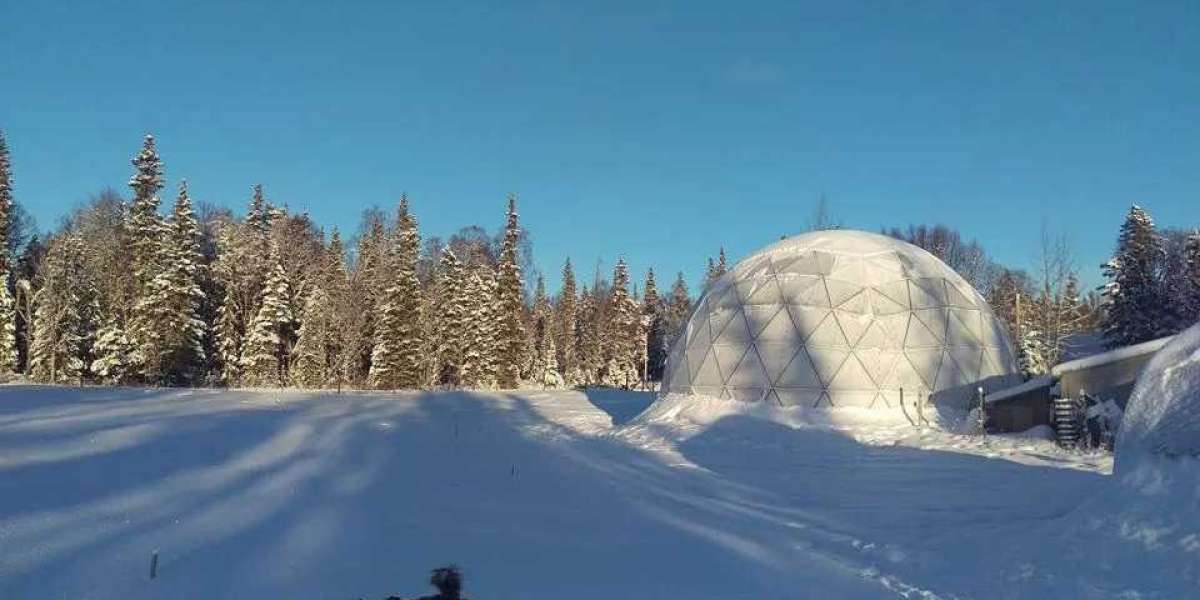In the frigid reaches of the Arctic, where snow and ice dominate the landscape, a revolutionary concept is taking root—Arctic Greenhouse Domes. These innovative structures, designed to create controlled environments for sustainable food production, offer a glimmer of hope in the face of climate change and the challenges it poses to agriculture. Combining cutting-edge technology with the power of nature, Arctic Greenhouse Domes are transforming the way we think about food security in one of the harshest environments on Earth.
Embracing the Arctic Challenges
The Arctic region presents formidable challenges to any agricultural endeavor. With subzero temperatures, limited sunlight, and a short growing season, traditional farming methods are virtually impossible. However, rather than viewing these challenges as obstacles, the creators of Arctic Greenhouse Domes saw them as opportunities for innovation.
These domes are designed to withstand extreme weather conditions, utilizing advanced insulation techniques to retain heat while keeping the cold out. Additionally, the domes incorporate energy-efficient systems to regulate temperature, light, and humidity, creating a microclimate suitable for plant growth. By adapting to the unique conditions of the Arctic, these domes maximise the potential for sustainable food production
Fostering Self-Sufficiency and Food Security
One of the primary goals of Arctic Greenhouse Domes is to promote self-sufficiency and enhance food security in remote Arctic communities. Historically, these communities have been heavily dependent on expensive food imports, often facing scarcity due to logistical challenges and high costs. The introduction of greenhouse domes provides a means to produce fresh, nutritious food locally, reducing reliance on external food sources.
With Arctic Greenhouse Domes, communities gain the ability to cultivate a wide range of crops year-round, overcoming the limitations of the Arctic climate. Fruits, vegetables, herbs, and even certain grains can be grown inside these controlled environments, offering a diverse and sustainable food supply. This newfound self-sufficiency not only strengthens food security but also provides economic opportunities through the potential for local produce sales.
A Synergy of Technology and Nature
Arctic Greenhouse Domes combine the best of modern technology with the inherent resilience of nature. While advanced climate control systems regulate temperature and humidity, other sustainable technologies further enhance the domes' efficiency. These include renewable energy sources like solar panels and wind turbines, which power the domes, reducing reliance on fossil fuels.
Furthermore, these domes employ innovative irrigation systems that utilise recycled water, minimising waste and optimising resource usage. By harnessing the principles of circular economy and sustainable practices, Arctic Greenhouse Domes minimise their ecological footprint while maximising agricultural output.
A Beacon of Inspiration for the World
The significance of Arctic Greenhouse Domes extends beyond their immediate impact in the Arctic region. As the world grapples with the consequences of climate change, these domes serve as beacons of inspiration, demonstrating that sustainable solutions can be developed even in the most challenging environments.
The knowledge and experience gained from designing and operating Arctic Greenhouse Domes can be shared globally, benefiting regions facing similar climatic constraints. The techniques, technologies, and lessons learned from these endeavors can pave the way for sustainable agriculture in various parts of the world, fostering resilience and combating food insecurity
Conclusion
Arctic Greenhouse Domes represent a remarkable fusion of human ingenuity and the power of nature. These innovative structures offer a practical solution to the challenges of Arctic agriculture, providing sustainable food production, self-sufficiency, and enhanced food security for remote Arctic communities. By embracing the unique conditions of the Arctic and incorporating advanced technologies, these domes create controlled environments where crops can thrive year-round.








